Remembering Balzac on the 220th Anniversary of his Birth
Debtor, caffeine addict and prolific writer, Honoré de Balzac has been all but forgotten by his beloved hometown of Tours. On the 220th anniversary of his birth, Marion Sauvebois joins the quest to put the literary giant firmly back on the map
“Most Tourangeaux don’t even know he was born here,” sighs Frédéric Dufrèche, Tours’s head of heritage, nudging me past the throngs of shoppers on the rue Nationale. “He came back to Tours again and again, he described the town and its inhabitants; it remained a great source of inspiration his entire life. Yet here we are.”
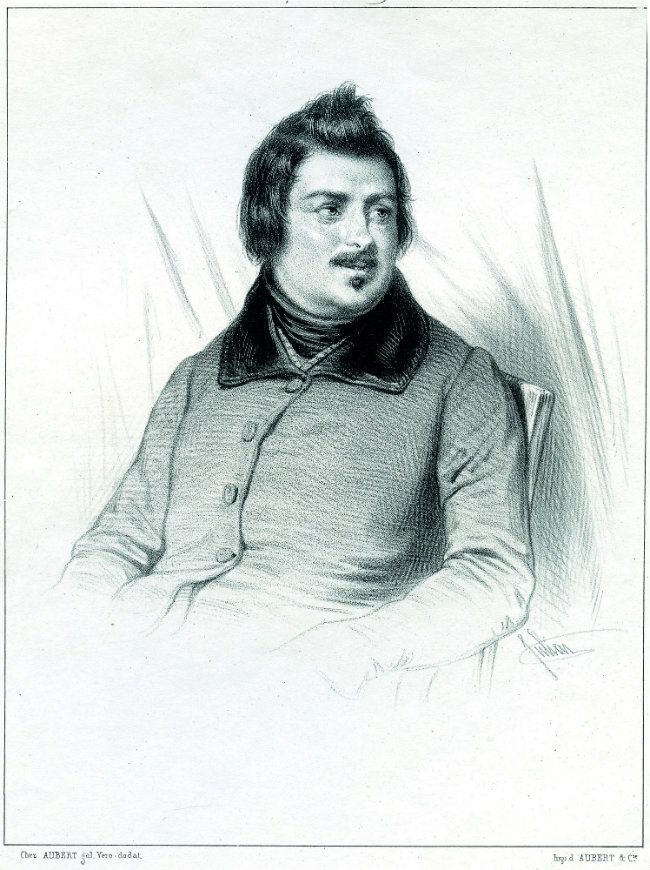
Honoré de Balzac. Credit: Bibliotheque Municipale de Tours
“Here” is a blink-and-you’ll miss-it panel sandwiched between two high-street chains informing passers-by that Honoré de Balzac was born at number 47, 220 years ago – with the briefest of biographies tacked on. “Here” is basically the sum total of Tours’s homage to its prodigal son and all-round literary giant.
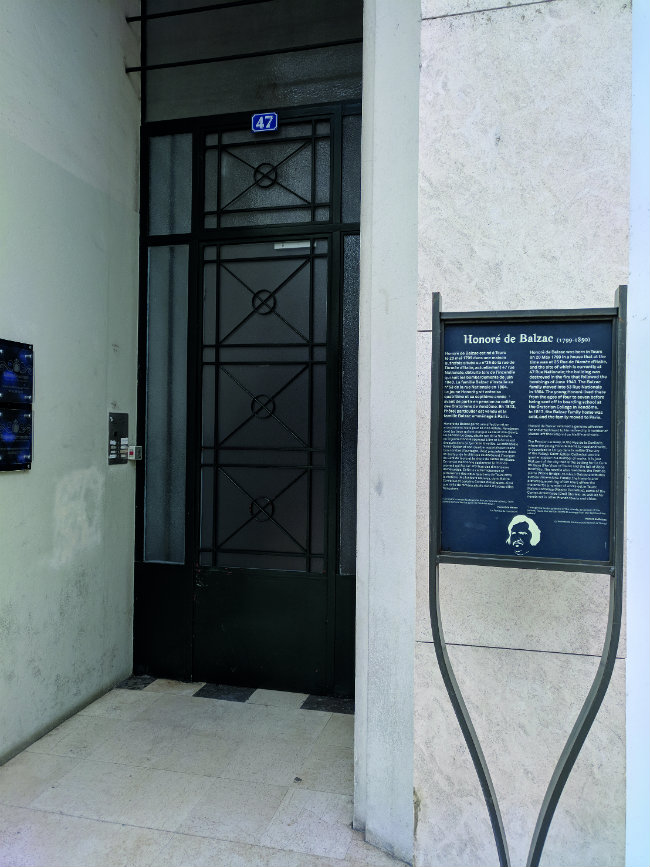
Balzac’s birthplace in Tours. Photo: Marion Sauvebois
Bear left at the unassuming ‘memorial’, and you’ll zero in on his family home, a vast hôtel particulier at number 53. Not that anyone would, or even could, hazard a guess at its illustrious past; what with the complete absence of a ‘Here lived’ plate… Or the minor fact that Balzac’s ancestral seat is enjoying a new lease of life as a trifecta of pharmacy, clothing store and – aptly, considering his skirt-chasing proclivities – lingerie shop!
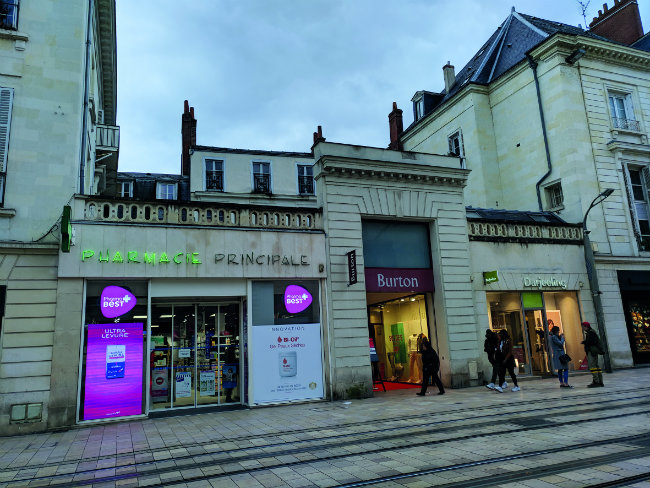
Balzac’s family home. Photo: Marion Sauvebois
Bar the token glass stele unveiled on the bicentenary of his birth at the Square François-Sicard – exactly 58 years after a previous monument to the author was melted down during the Occupation, obliterating the last remaining speck of his existence in Tours – it’s fair to say tributes to the Father of Realism are pretty thin on the ground in his “amorous, buxom, blooming” (in his own adoring words) hometown.
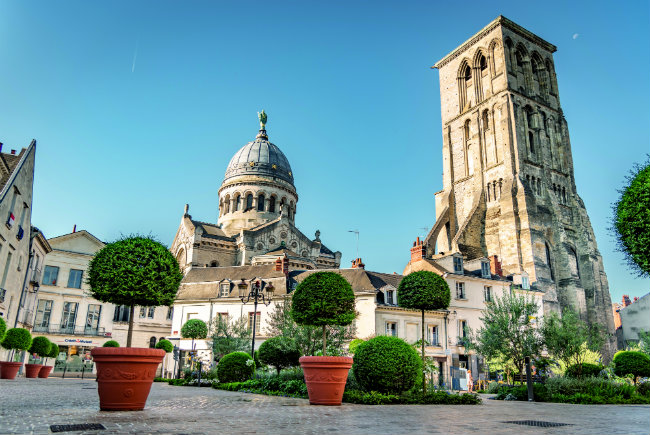
Vieux Tours captured Balzac’s imagination. Photo: Ville de Tours/ V Liorit
But it’s all about to change and not a moment too soon. With the 220th anniversary of his birth, on May 20, just weeks away Frédéric and the heritage gang are ready to refresh townsfolk’s memory and rescue Balzac from oblivion once and for all, with a packed schedule of events, a new app, dedicated trail and – at this he flashes a Cheshire cat grin – plaques flagging up the key sites balzaciens.
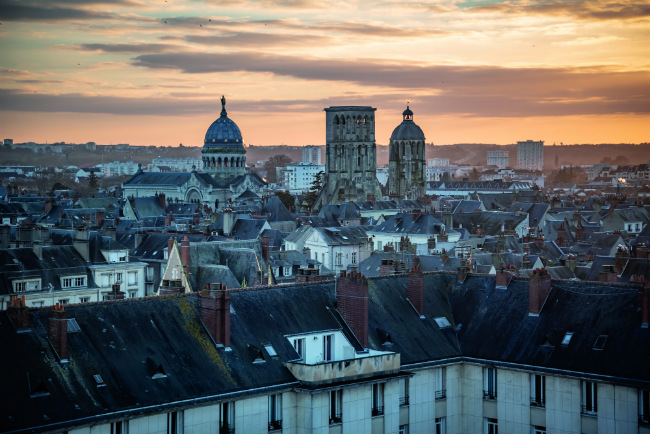
A bird’s eye view of the Basilique Saint Martin and Tour Charlemagne. Photo: Ville de Tours/ V Liorit
THE MAN TOURS FORGOT
Lack of signage aside, Balzac’s obsessive attention to detail, penchant for (excruciatingly) drawn-out descriptions and the sheer volume of his oeuvre, may have had something to do with this bout of local amnesia. Those who have plodded through his 91-novel magnum opus in school are keen to put the experience firmly behind them.
Even his contemporaries did not quite know what to make of the feverishly ambitious author nor his mammoth (and hugely popular in his own time) La Comédie Humaine – a dense kaleidoscope of 2,500 characters, including 573 recurring protagonists, penned in just 20 years, in which he set out to capture his ever-changing society… in its entirety. A living contradiction, prone to excess and veritable dynamo, from the offing Balzac was spurred on by an unshakable faith in his ability to succeed, despite all evidence to the contrary.
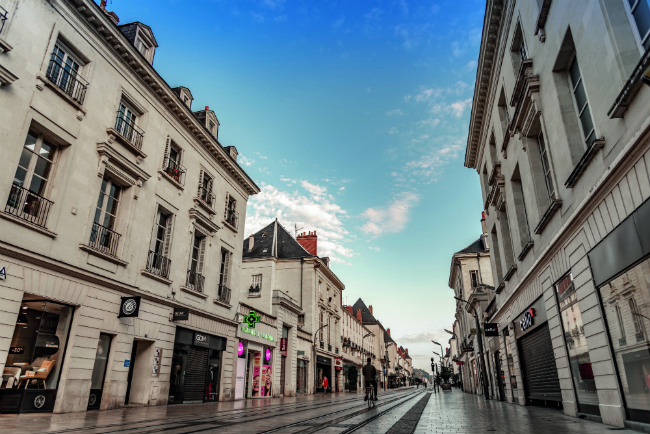
Balzac was born on what is now the rue Nationale. Photo: Ville de Tours/ V Liorit
For the first ten years of his career, he failed at virtually everything he touched – philosophy, playwriting – and eventually resorted to churning out potboilers under a pseudonym to scrape a living. Determined to make something of himself, he tried his hand at publishing and printing, swiftly going bankrupt – not once but twice. Hag-ridden with debts but undeterred, he continued to chase glory, writing maniacally, holed up for 18 hours a day, fuelled by some 50 cups of coffee (a mouth-puckering concoction he brewed himself and which most argue put him in an early grave).
A master of reinvention, at 30 he changed tack. Inspired by Walter Scott’s sweeping epics, he released a historical novel of his own, Les Chouans, and against all odds saw his first glimmer of fame. Not content to rehash the past, however, he set his sights on recording “history in the making” and becoming the chronicler of his time. He would devote the next two decades, until his untimely death at the age of 51, to La Comédie Humaine, one of the greatest literary endeavours ever attempted.
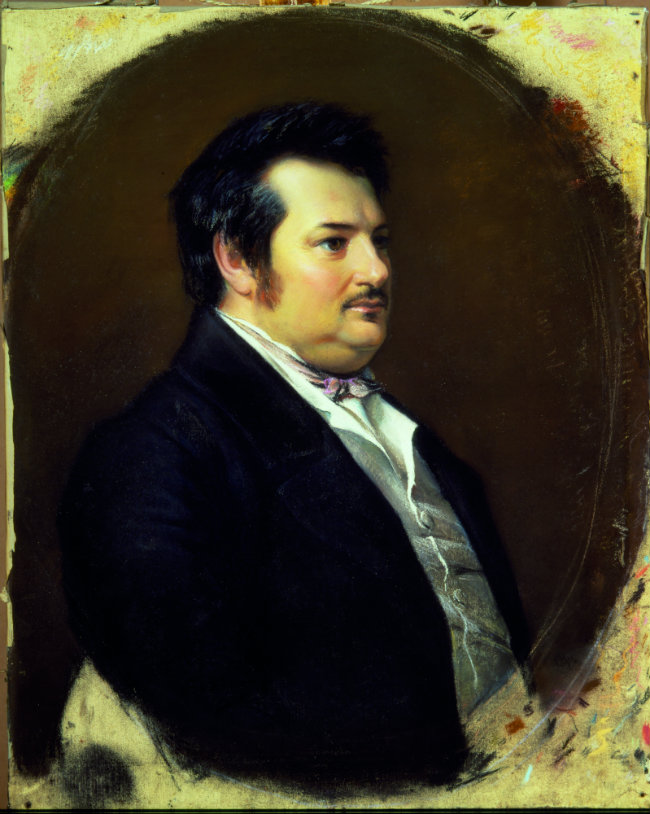
Pastel portrait of Balzac by Jean-Alfred Gerard-Seguin. Credit: Musee des Beaux Beaux Arts de Tours
His obsession, passion and outlet, he was utterly consumed by his masterwork. On his deathbed, he reportedly called out for Docteur Bianchon, one of his characters. In the end though, he became his own greatest creation. In spite of his rather unforgiving physique – his pudgy, short stature and chipped smile were avidly caricatured – his irresistible charisma and wit left no one indifferent, especially not the fairer sex.
A would-be dandy, he paradoxically craved to belong to the very aristocracy he mercilessly ridiculed in La Comédie Humaine, and went as far as adding the ‘de’ noble particle to his name. To look the part, the incorrigible spendthrift frittered away his earnings on an impossibly lavish lifestyle, racking up debts faster than he slurped coffee. He famously chose his Parisian homes based on the number of backdoors, should he need to give creditors the slip.
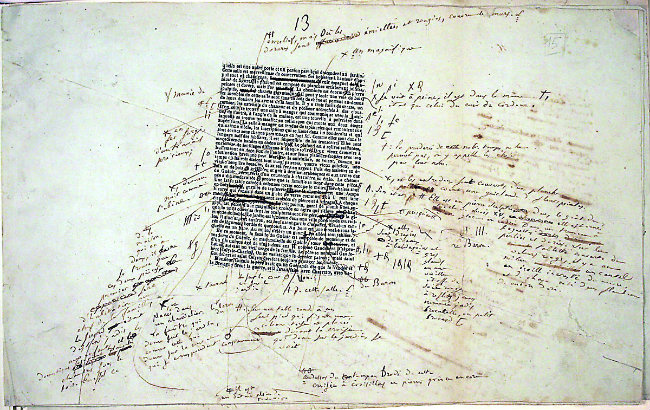
Balzac was wont to scribble feverish notes over his drafts. Credit: Bibliotheque Municipale de Tours
HOMEWARD BOUND
Through thick and thin, penury and prosperity, Tours remained his constant: a reassuring anchor, refuge, and endless source of inspiration in a world of constant flux. Unlike many of his contemporaries who were wont to shed their provincial origins the moment they set foot in Paris, Balzac never forgot his cherished hometown – where he barely lived 15 years, on and off, before being whisked off to boarding school and, later, Paris.
He himself marvelled at the city’s inexplicable and irrevocable pull on him in Le Lys dans la Vallée: “So deeply traced upon the heart are the impressions received in the dawn of life”.
Again and again, he returned obsessively and adoringly to Tours in his masterwork. Rarely named but painstakingly described, its landmarks – from the Gothic Cathedral Saint-Gatien, Abbaye de Marmoutier, Pont Wilson (“one of the most beautiful monuments French architecture has produced”) to the warren-like old town – are mentioned in no fewer than 40 novels. Each vignette reads like a billet-doux from a besotted lover.
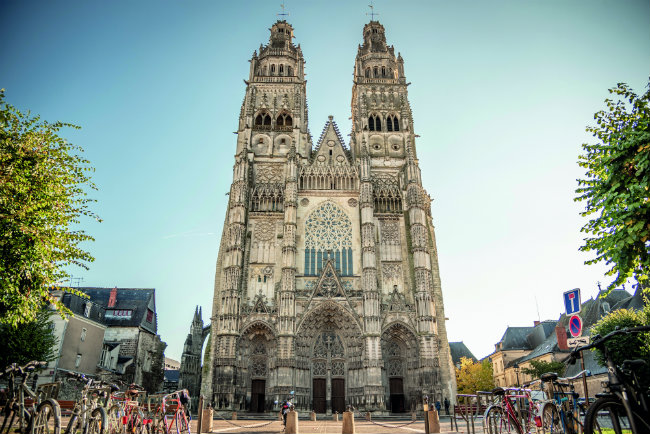
The cathedral in Tours lent its backdrop to several of Balzac’s books. Photo: Ville de Tours/ V Liorit
Communing with the muse aside, he did have an ulterior motive for scampering off to Tours: shaking off creditors. That’s how the story goes anyway. In reality, his birthplace was no safer than Paris for the chronically indebted Balzac. In fact, he was persona non grata for some time, after eagerly pocketing his fee but failing to deliver a short story to Tours’s famous Mame publishers.
“Let’s just say Tours may not have always been the peaceful haven so many people make it out to be,” Frédéric frowns, as we wander past the Pension Le Guay, now the cosy Hôtel du Théâtre, where Balzac learned to read and write and was educated between the ages of five and eight before being shipped off to boarding school. His childhood was rather unhappy.
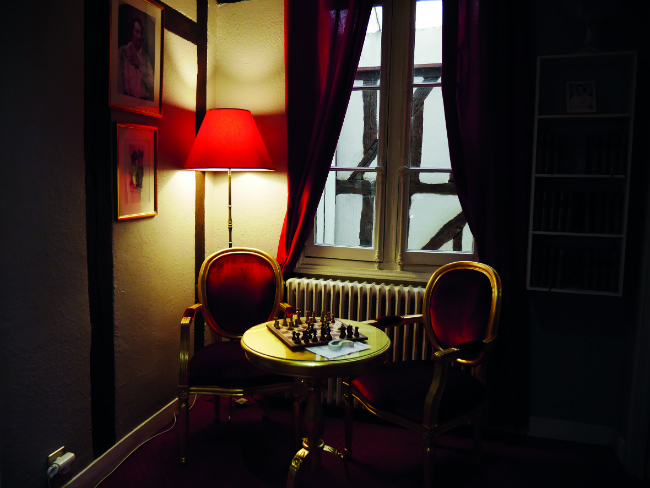
Pension Le Guay, now the Hôtel du Théâtre. Photo: Marion Sauvebois
Here, uncharacteristically, the canny proprietor took it upon himself two years ago to put up his own commemorative plaque-cum-potted history of Balzac’s early life on the façade – a rare tribute and handy marker for literary sleuths racking their brains to piece together his journey through Tours.
“People are starting to take an interest,” beams Frédéric. “And with the 220th anniversary just around the corner, we’re really hoping more will take pride in Balzac. He is our best ambassador. We just need to jog their memory.”
With what the town has in store on this make-or-break anniversary year, it won’t be so much of a jog as a marathon.
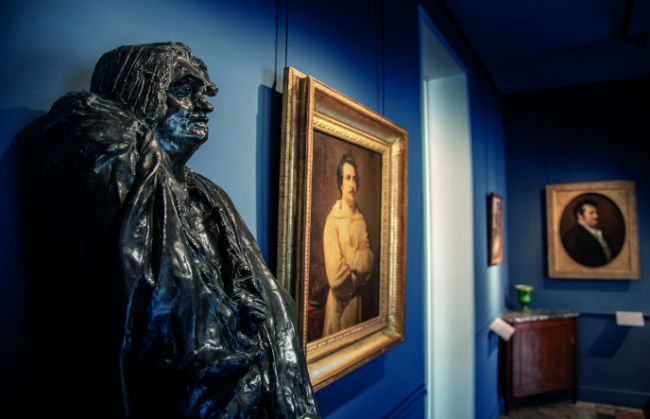
Musée des Beaux-Arts in Tours.
HONOUR THY AUTHOR
From round-the-clock performances all the way until December, readings, conferences, concerts, coffee tastings (a nod to Balzac’s poison of choice) and cycling tours to special light shows, a tight-rope walking act and countless impersonators swarming the streets, Balzac will be virtually impossible to ignore – or forget.
Mayor Christophe Bouchet, the mastermind responsible for saving the city’s most famous son from (local) obscurity, and his right arm, head of cultural affairs, Bruno Lonchampt, have even teamed up with artist Nicolas Mihlé to create five sculptures of the wordsmith’s most (in)famous characters: Rastignac, Père Goriot, Abbé Birotteau and Mademoiselle Gamard (both featured in Le Curé de Tours) and Blanche-Henriette de Mortsauf. The artworks will be unveiled in November in the Jardin de la Préfecture. And there’s a twist.
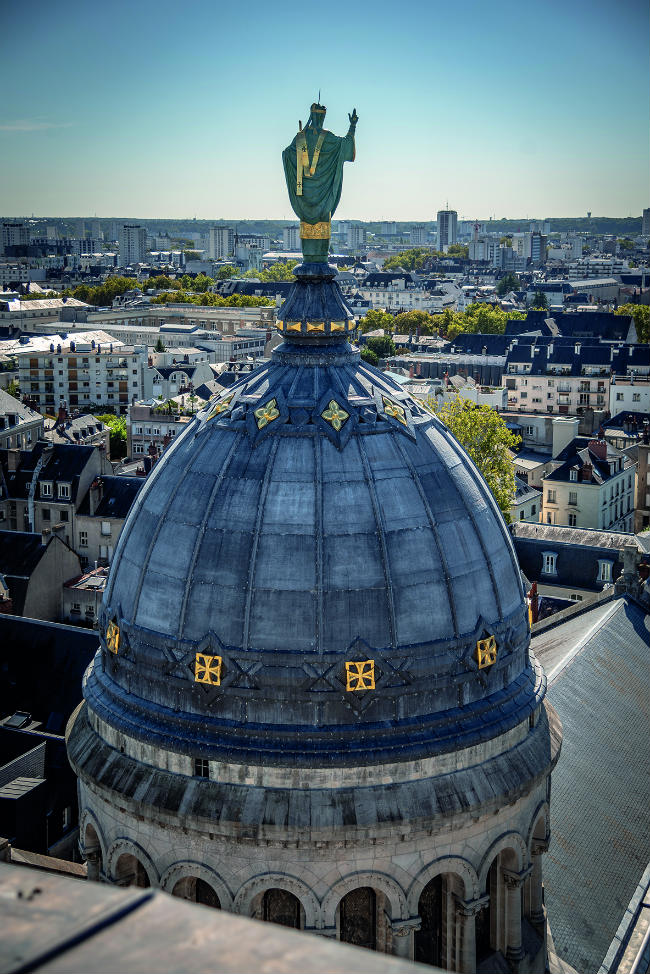
The Old Town of Tours. Photo: Ville de Tours/ V Liorit
To ensure townsfolk take ownership of their homeboy and his grand masterpiece at long last, each statue will be modelled after a Tourangeau. The town hall will hold pre-auditions, whittling hopefuls down to 15. The lucky lot will be interviewed by Mihlé one-on-one and selected based not only on their physical resemblance but shared personality traits with the characters. A tall order as some, namely Rastignac, aren’t exactly paragons of virtue or immensely likeable. The monuments will then be moulded on their faces, in a symbolic union of Tours and Balzac. His characters will be set in stone, well bronze, in the town that spawned or inspired them.
“It’s only the start, a stepping stone,” Bruno Lonchampt is keen to point out. “Balzac described Tours as you’d describe a lover. He loved the town and came until the end, as long as his health would allow. It’s high time Tours showed him love in return.”
For a full schedule of events on this 220th anniversary year, go to www.tours.fr
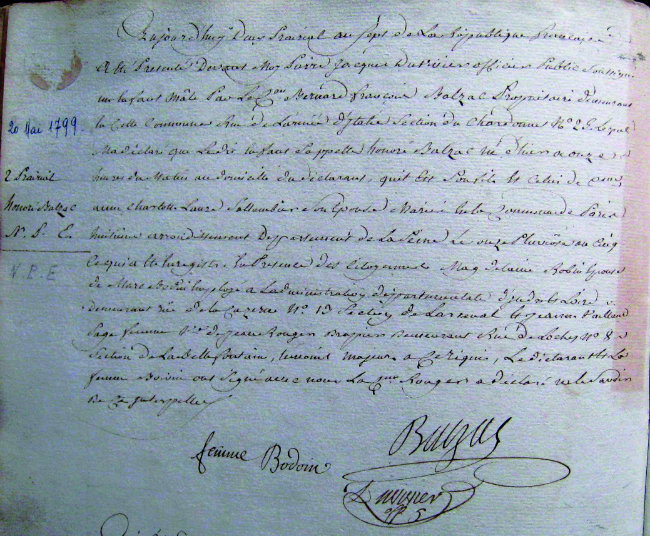
Balzac’s birth certificate. Credit: Biblioteque Municipale de Tours
SIDEBAR: IN THE FOOTSTEPS OF BALZAC
Ready to hop on the Balzac trail on this momentous 220th anniversary year? Here is the lowdown on the top 10 sights and landmarks to discover – or wander past – on your next visit to Tours.
MAISON NATALE
Once proudly gracing the sweeping rue Nationale, Balzac’s birthplace was destroyed by Allied air raids during the Second World War; but a wrought-iron panel still marks its location at number 47 (blink and you’ll miss it).
MAISON FAMILIALE
Spared by Allied bombings, his family home at number 53 rue Nationale bears no sign (though this oversight is about to be remedied ahead of Balzac’s anniversary weekend in May). It’s now enjoying a new lease of life on Tours’s busy shopping avenue as a pharmacy, clothing shop and… lingerie store!
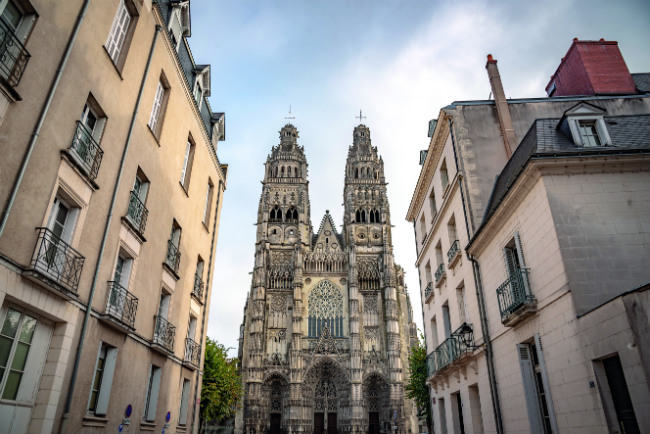
The Saint-Gatien Cathedral in Tours. Photo: Ville de Tours/ V Liorit
CATHÉDRALE SAINT-GATIEN
As a child Balzac was in awe of the cathedral, where he attended Sunday mass with his mother and sister Laure. He set several of his books in the cathedral district, including Le Curé de Tours. Step inside and behold Collin-Thiébaut’s astonishing stained-glass window. Commissioned to mark the 1,700th anniversary of the birth of Tours’s iconic saint, Martin, it depicts the sadly short-lived campaign to provide tents to the homeless along the Canal Saint-Martin in Paris in the mid-noughties.
STÈLE BALZAC
A fledgling attempt to rescue Balzac from oblivion back in 2000, the daguerreotype-style glass sculpture was unveiled as part of the bicentenary of his birth. Up until that point there had been no monument to the author in Tours since the Occupation – a previous bronze by Paul Fournier having been melted down in 1942. Etched with Balzac’s rushed, ink-blotted handwriting, the installation takes pride of place in the Square François-Sicard.
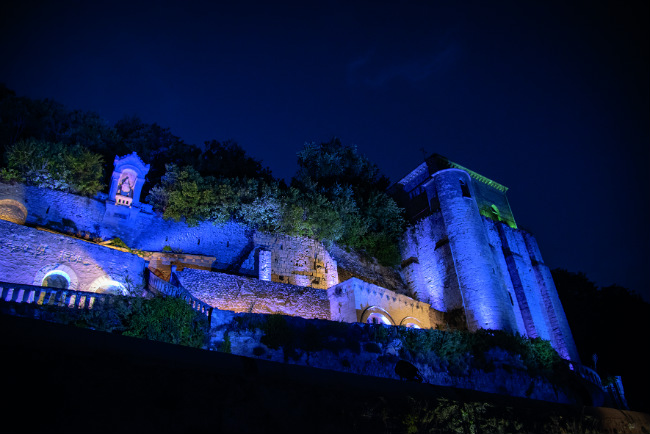
Abbaye de Marmoutier.
ABBAYE DE MARMOUTIER
Originally a humble hermitage, dug, legends has it, straight from the rock by Saint Martin in the 4th century, it grew exponentially to become a mammoth abbey complex. Destroyed after the Revolution, the vast ruin (and now excavation site) appealed to Balzac’s artistic sensibility and gets a brief mention in L’Excommunié and Le Péché Véniel.
MUSÉE DES BEAUX-ARTS
Formerly the Bishop’s Palace, the Musée des Beaux-Arts is home to Louis Boulanger and Jean-Alfred Gérard-Seguin’s iconic portraits of Balzac as well as a copy of Rodin’s (in)famous sculpture of the literary behemoth. The artist initially planned to show Balzac butt-naked but faced with the ire of the Sociéte des Gens de Lettres backed down and eventually bundled him up in a thick mantle. Don’t miss the ‘Monumental Balzac’ exhibition from May 18 to September 2, which will turn the spotlight on the monuments dedicated to the writer in France and retrace the rocky genesis of Rodin’s commemorative statue and its countless iterations, complete with studies, sketches and plaster moulds.
PENSION LE GUAY
Now the snug Hôtel du Théâtre, located opposite the opera house, this is where Balzac learned to read and write and was educated from the ages of five to eight before being sent to boarding school in nearby Vendôme. Curl up with a cup of coffee and a copy of Le Lys dans la Vallée, in which he briefly touches upon his time at the school, in the hotel’s dedicated Balzac reading nook!
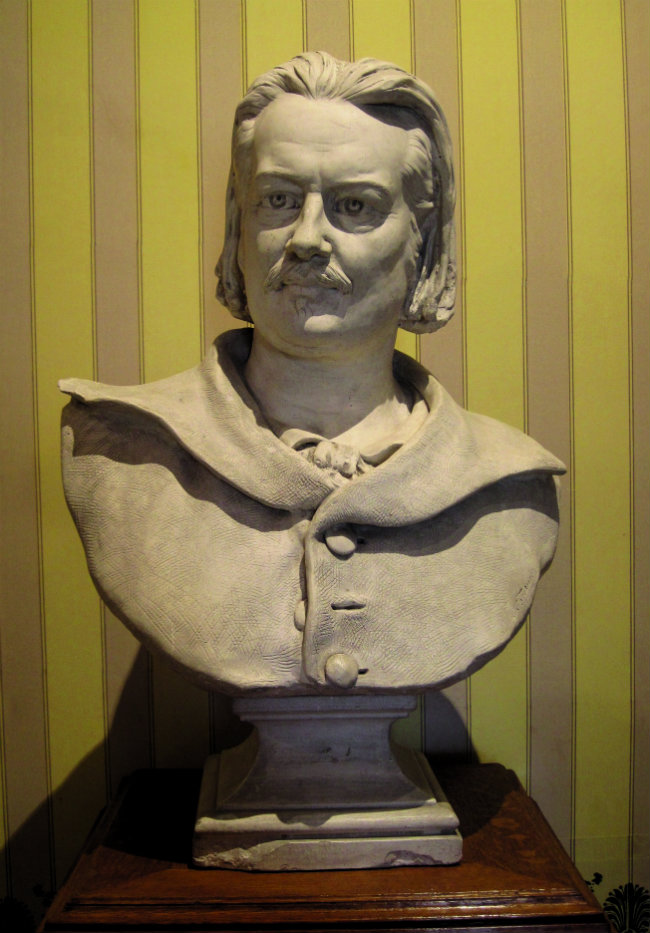
A bust of Balzac by Paul Fournier. Credit: Musee des Beaux Arts de Tours
PONT WILSON
Known as the Pont de Pierre in Balzac’s day, the sweeping bridge straddling the mighty Loire River was hailed as “one of the most beautiful monuments French architecture has produced” in Le Curé de Tours.
HÔTEL PIERRE-DU-PUY
Tours’s only Flemish-style hôtel particulier captured Balzac’s imagination. From the burnished brick to the saw-tooth roof, he described it with near-photographic accuracy in La Recherche de l’Absolu.
VIEUX TOURS
The Old Town gets a starring role in Les Contes Drolatiques, with no fewer than 40 streets and landmarks ticked off. Don’t miss the Tour Charlemagne and Tour de l’Horloge – the last vestiges of the Collégiale Saint-Martin, one of the largest pilgrimage sites in Christendom in the 11th and 12th centuries, or the Neo-Byzantine Basilique Saint-Martin, designed by star architect Victor Laloux, of Musée d’Orsay fame.
From France Today magazine
Share to: Facebook Twitter LinkedIn Email
Leave a reply
Your email address will not be published. Required fields are marked *






REPLY